The Mutina Dog Breed, native to Kenya, is known for its unique and diverse coat colors. These colors not only add to the breed’s charm but also play a vital role in helping the dogs adapt to the various climates across the country.
From the scorching savannas to the cooler highlands, each coat color has evolved to offer the Mutina Dog protection and comfort in its environment.
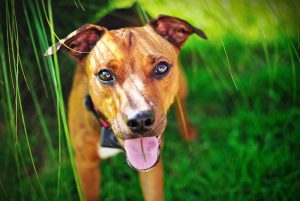
In this article, we will explore the ten most common coat colors for the Mutina Dog Breed in Kenya and explain how each one benefits the breed. Additionally, we will provide an in-depth look at the pros and cons of each coat color to give a comprehensive understanding of what makes the Mutina Dog Breed so special.
10 Common Coat Colors for the Mutina Dog Breed in Kenya
1. Sandy Brown
Sandy brown is one of the most common coat colors for the Mutina Dog Breed in Kenya. This color allows the dog to blend in perfectly with the arid, sandy landscapes found in many parts of the country. The sandy brown coat provides excellent camouflage, making the dog less visible to potential predators and allowing it to move around undetected.
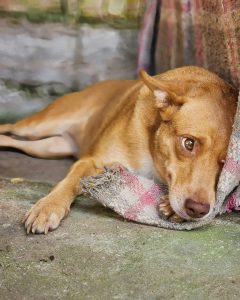
Additionally, the sandy brown color reflects sunlight, which helps the dog stay cool during the hot and dry days typical of Kenya’s savannas. The coat also minimizes the absorption of heat, which is crucial for the dog’s comfort and survival in these harsh environments.
The sandy brown coat is particularly advantageous for dogs living in regions with little vegetation, where the ground is mostly dry and barren. The color offers a natural blend with the surroundings, making it easier for the dog to hide from threats. The coat also plays a significant role in regulating the dog’s body temperature, helping it adapt to the extreme temperatures of the Kenyan climate. This makes the sandy brown coat one of the most effective coat colors for the Mutina Dog Breed in Kenya, especially in areas where the sun is intense, and the ground is dry.
Pros:
- Natural camouflage
- Reflects sunlight
- Reduces heat absorption
- Blends with dry landscapes
- Ideal for hot climates
- Prevents overheating
- Suits arid regions
Cons:
- Less visible at night
- Stains easily
- Limited shade benefit
2. Light Tan
Light tan is another prevalent coat color for the Mutina Dog Breed in Kenya, particularly in regions characterized by hot climates. This coat color is highly effective in reflecting sunlight, which helps the dog stay cooler during the intense heat of the day.
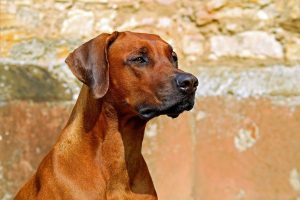
The light tan coat acts as a natural barrier against the sun’s rays, preventing the dog from overheating and ensuring it remains comfortable in the sweltering temperatures of Kenya’s savannas. Additionally, the light tan color allows the dog to blend in with the dry grasses and light-colored earth, providing excellent camouflage in open landscapes.
In addition to its practical benefits, the light tan coat color also contributes to the overall aesthetics of the Mutina Dog Breed in Kenya. The color gives the dog a sleek and elegant appearance, which is highly admired by dog enthusiasts. Moreover, the light tan coat requires minimal grooming, as it does not show dirt or stains as easily as darker coats. This makes it a low-maintenance option for owners who live in rural areas where frequent baths may not be possible. Overall, the light tan coat color is a perfect choice for the Mutina Dog Breed, providing both functional and aesthetic advantages.
Pros:
- Reflects sunlight
- Prevents overheating
- Blends with dry grasses
- Sleek appearance
- Low maintenance
- Camouflages well
- Ideal for hot climates
Cons:
- Less warmth at night
- Less visible in shade
- Stains with red soil
3. Reddish-Brown
Reddish-brown is a distinctive and beautiful coat color for the Mutina Dog Breed in Kenya. This color closely resembles the rich, red soils found in various regions of the country, especially during the dry season. The reddish-brown coat offers excellent camouflage, allowing the dog to blend in seamlessly with its surroundings.
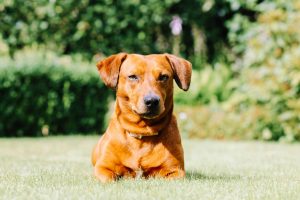
This natural disguise is particularly useful in areas where the landscape is dominated by red soil and sparse vegetation, helping the dog avoid detection by predators or other threats. The reddish-brown coat also absorbs a moderate amount of heat, making it suitable for cooler mornings and evenings, while still providing some protection from the midday sun.
The reddish-brown coat color is also highly regarded for its aesthetic appeal. The deep, earthy tones give the Mutina Dog Breed a striking and majestic appearance, making it stand out among other breeds. Additionally, the reddish-brown coat is relatively easy to maintain, as it does not show dirt or stains as easily as lighter colors. This makes it a practical choice for dogs that spend a lot of time outdoors. Overall, the reddish-brown coat color is an excellent option for the Mutina Dog Breed in Kenya, offering both practical and visual benefits.
Pros:
- Camouflages with red soil
- Suitable for cooler weather
- Majestic appearance
- Easy maintenance
- Blends with dry landscapes
- Absorbs moderate heat
- Ideal for dry season
Cons:
- Absorbs some heat
- Less visible at night
- Limited in grassy areas
4. Cream
Cream is a common coat color for the Mutina Dog Breed in Kenya, particularly in regions with intense sunlight. The cream-colored coat is highly reflective, making it an excellent choice for dogs living in areas where the sun is particularly strong.
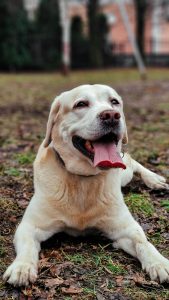
This color helps to regulate the dog’s body temperature by reflecting the sun’s rays, preventing overheating and ensuring the dog remains comfortable even during the hottest parts of the day. The cream coat also blends well with the sun-drenched landscapes of Kenya, offering a level of camouflage that protects the dog from potential predators.
The cream coat color is also appreciated for its aesthetic qualities, giving the Mutina Dog Breed a soft and gentle appearance. This color is often associated with elegance and grace, making the dog a popular choice among those who appreciate its beauty. Additionally, the cream coat is relatively low maintenance, as it does not show dirt or stains as easily as darker colors. However, it may require more frequent grooming to keep it looking clean and bright. Overall, the cream coat color is an excellent choice for the Mutina Dog Breed in Kenya, offering both practical and visual benefits.
Pros:
- Reflects sunlight
- Prevents overheating
- Soft appearance
- Low maintenance
- Blends with sun-drenched areas
- Regulates body temperature
- Elegant and graceful
Cons:
- Requires frequent grooming
- Less warmth at night
- Shows dirt easily
5. Dark Brown
Dark brown is a versatile and common coat color for the Mutina Dog Breed in Kenya, especially in regions with cooler climates. The dark brown coat absorbs more heat than lighter colors, making it ideal for dogs living in higher altitudes or areas where temperatures drop at night.

This color helps the dog stay warm during cooler nights, ensuring its comfort and well-being. During the day, the dark brown coat provides a balance between heat absorption and reflection, allowing the dog to maintain a stable body temperature in varying weather conditions.
The dark brown coat color also offers a level of camouflage that is particularly useful in forested or bushy areas. The deep, rich color blends well with the natural surroundings, helping the dog stay hidden from predators or other threats. Additionally, the dark brown coat is relatively easy to maintain, as it does not show dirt or stains as easily as lighter colors. This makes it a practical choice for dogs that spend a lot of time outdoors. Overall, the dark brown coat color is an excellent option for the Mutina Dog Breed in Kenya, providing both functional and aesthetic advantages.
Pros:
- Absorbs heat
- Suitable for cool climates
- Blends with forests
- Easy maintenance
- Camouflages well
- Stable body temperature
- Provides warmth
Cons:
- Absorbs more heat
- Less visible in dark
- Requires cooling shade
6. Golden Yellow
Golden yellow is a vibrant and common coat color for the Mutina Dog Breed in Kenya, particularly in regions characterized by savanna landscapes. This color closely resembles the dry grasses and golden hues of the savanna, providing the dog with excellent camouflage.
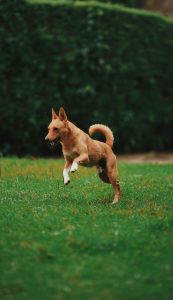
The golden yellow coat helps the dog blend in with its surroundings, making it less visible to predators and allowing it to move around undetected. Additionally, the golden yellow color reflects sunlight, helping the dog avoid overheating during the long hours spent outdoors in the sun-drenched savannas.
The golden yellow coat color is also highly admired for its striking appearance. The bright, warm tones give the Mutina Dog Breed a radiant and energetic look, making it stand out in a crowd. The color also has a symbolic significance, representing the vitality and resilience of the breed. Moreover, the golden yellow coat is relatively easy to maintain, as it does not show dirt or stains as easily as darker colors. This makes it a practical choice for dogs that spend a lot of time in the wild. Overall, the golden yellow coat color is an excellent choice for the Mutina Dog Breed in Kenya, offering both practical and aesthetic benefits.
Pros:
- Natural camouflage
- Reflects sunlight
- Energetic appearance
- Easy maintenance
- Symbolic significance
- Avoids overheating
- Blends with savannas
Cons:
- Less warmth at night
- Less visible in shade
- Requires frequent grooming
7. Black
Black is a powerful and common coat color for the Mutina Dog Breed in Kenya, particularly in regions with cooler climates. The black coat absorbs a significant amount of heat, making it ideal for dogs living in higher altitudes or areas where temperatures drop at night.
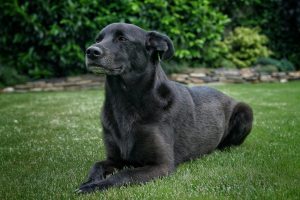
This color helps the dog stay warm during cooler nights, ensuring its comfort and well-being. During the day, the black coat provides a balance between heat absorption and reflection, allowing the dog to maintain a stable body temperature in varying weather conditions.
The black coat color also offers a level of elegance and sophistication that is highly admired. The deep, rich color gives the Mutina Dog Breed a striking and majestic appearance, making it stand out among other breeds. Additionally, the black coat is relatively easy to maintain, as it does not show dirt or stains as easily as lighter colors. However, it may require more frequent grooming to keep it looking clean and glossy. Overall, the black coat color is an excellent option for the Mutina Dog Breed in Kenya, providing both functional and aesthetic advantages.
Pros:
- Absorbs heat
- Suitable for cool climates
- Elegant appearance
- Easy maintenance
- Camouflages well
- Stable body temperature
- Provides warmth
Cons:
- Absorbs more heat
- Less visible at night
- Requires cooling shade
8. Brindle
Brindle is a unique and common coat color for the Mutina Dog Breed in Kenya, characterized by a mix of dark and light stripes or patches. This coat color offers excellent camouflage in various environments, particularly in forested or bushy areas.
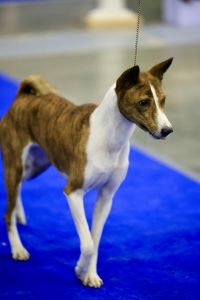
The brindle coat allows the dog to blend in with the natural surroundings, making it less visible to predators and providing a level of protection. The brindle color also provides a balance between heat absorption and reflection, helping the dog maintain a stable body temperature in different weather conditions.
The brindle coat color is also highly valued for its striking appearance. The mix of dark and light tones gives the Mutina Dog Breed a distinctive and eye-catching look, making it a favorite among dog enthusiasts. Additionally, the brindle coat is relatively easy to maintain, as it does not show dirt or stains as easily as solid colors. This makes it a practical choice for dogs that spend a lot of time outdoors. Overall, the brindle coat color is an excellent option for the Mutina Dog Breed in Kenya, offering both practical and aesthetic benefits.
Pros:
- Excellent camouflage
- Stable body temperature
- Striking appearance
- Easy maintenance
- Blends with forests
- Protects from predators
- Suitable for varying climates
Cons:
- Requires frequent grooming
- Less warmth at night
- Less visible in dark
9. White
White is a common coat color for the Mutina Dog Breed in Kenya, particularly in regions characterized by cooler climates. The white coat is highly reflective, making it an excellent choice for dogs living in areas where the sun is not as intense.
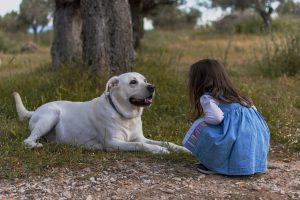
This color helps to regulate the dog’s body temperature by reflecting sunlight, preventing overheating and ensuring the dog remains comfortable in varying weather conditions. The white coat also offers a level of elegance and purity that is highly admired, giving the Mutina Dog Breed a regal and sophisticated appearance.
The white coat color is also associated with certain symbolic meanings, such as purity and grace, making the dog a popular choice among those who appreciate its beauty. Additionally, the white coat is relatively easy to maintain, as it does not show dirt or stains as easily as darker colors.
However, it may require more frequent grooming to keep it looking clean and bright. Overall, the white coat color is an excellent choice for the Mutina Dog Breed in Kenya, offering both practical and visual benefits.
Pros:
- Reflects sunlight
- Prevents overheating
- Elegant appearance
- Symbolic significance
- Easy maintenance
- Regulates body temperature
- Suits cooler climates
Cons:
- Requires frequent grooming
- Less warmth at night
- Shows dirt easily
10. Gray
Gray is a versatile and common coat color for the Mutina Dog Breed in Kenya, particularly in regions with diverse climates. The gray coat offers a balance between heat absorption and reflection, making it suitable for dogs living in areas with varying temperatures.
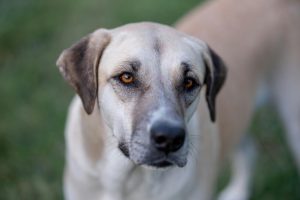
This color helps the dog stay warm during cooler mornings and evenings, while still providing some protection from the midday sun. The gray coat also blends well with a variety of landscapes, from rocky terrains to open fields, providing the dog with a level of camouflage that helps it avoid detection by predators.
The gray coat color is also highly regarded for its aesthetic appeal. The neutral tones give the Mutina Dog Breed a sleek and modern appearance, making it a favorite among dog enthusiasts.
Additionally, the gray coat is relatively easy to maintain, as it does not show dirt or stains as easily as lighter colors. This makes it a practical choice for dogs that spend a lot of time outdoors. Overall, the gray coat color is an excellent option for the Mutina Dog Breed in Kenya, providing both functional and visual advantages.
Pros:
- Balances heat absorption
- Suitable for varying climates
- Sleek appearance
- Easy maintenance
- Camouflages with landscapes
- Stable body temperature
- Provides warmth
Cons:
- Requires cooling shade
- Less visible in dark
- Absorbs some heat
Common Coat Colors For The Mutina Dog Breed In Kenya FAQs
1. What is the most common coat color for the Mutina Dog Breed in Kenya?
The most common coat color for the Mutina Dog Breed in Kenya is sandy brown. This color provides excellent camouflage in the arid, sandy landscapes and reflects sunlight to keep the dog cool in hot climates.
2. Which coat color is best for dogs living in cooler climates in Kenya?
For dogs living in cooler climates in Kenya, dark brown and black coat colors are ideal. These colors absorb more heat, helping the dog stay warm during cooler mornings and nights.
3. How does the coat color of the Mutina Dog Breed affect its ability to blend with the environment?
The coat color of the Mutina Dog Breed plays a crucial role in its ability to blend with the environment. For example, sandy brown and reddish-brown coats offer excellent camouflage in dry, arid regions, while brindle and gray coats provide good camouflage in forested or rocky areas.
4. Are lighter coat colors like cream and white suitable for the Kenyan climate?
Yes, lighter coat colors like cream and white are suitable for the Kenyan climate, especially in regions with intense sunlight. These colors reflect sunlight, preventing overheating and keeping the dog comfortable in hot weather.
5. Which coat color requires the least maintenance?
Gray and brindle coat colors require the least maintenance. These colors do not show dirt or stains as easily as lighter colors, making them practical choices for dogs that spend a lot of time outdoors.
6. Do all coat colors of the Mutina Dog Breed provide some level of camouflage?
Yes, all coat colors of the Mutina Dog Breed provide some level of camouflage, depending on the environment. For example, sandy brown and reddish-brown coats blend well with arid landscapes, while brindle and gray coats offer better camouflage in forested or rocky areas.
7. How does the coat color of the Mutina Dog Breed impact its health and comfort?
The coat color of the Mutina Dog Breed impacts its health and comfort by influencing its ability to regulate body temperature and blend with the environment. Lighter colors reflect sunlight, preventing overheating, while darker colors absorb heat, providing warmth in cooler climates.
Conclusion
The coat colors of the Mutina Dog Breed in Kenya are not just visually appealing but also play a vital role in the dog’s ability to adapt to its environment.
Each color offers unique benefits, from camouflage to temperature regulation, making the Mutina Dog Breed well-suited to the diverse climates of Kenya.
Whether you are looking for a dog that can blend in with the arid landscapes or one that can stay warm during cool nights, the Mutina Dog Breed offers a variety of coat colors to choose from.
Understanding the pros and cons of each coat color will help you make an informed decision when selecting a Mutina Dog, ensuring that it thrives in its environment and remains a loyal and comfortable companion.
Recent Posts
Benin Coup Bombshell Soldiers Announce Seizure Of Power On National TV
On 7 December 2025, soldiers in Benin appeared live on national television and announced that they had seized power from the country’s elected government. The announcement shocked the nation and...
Snowfall patterns across the United States vary wildly, with northern regions regularly blanketed in white while southern states often go years without a single flake. Because of this variability,...